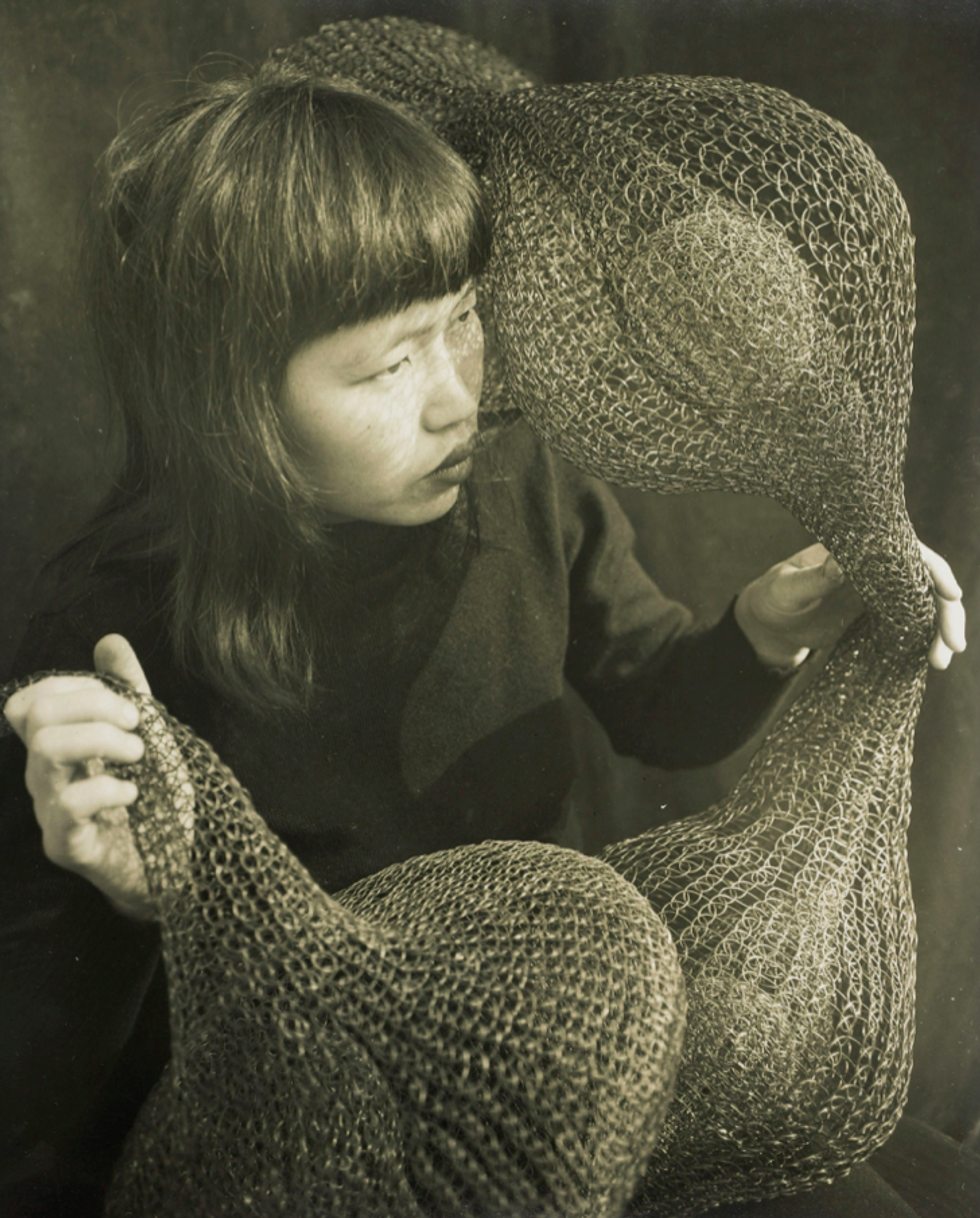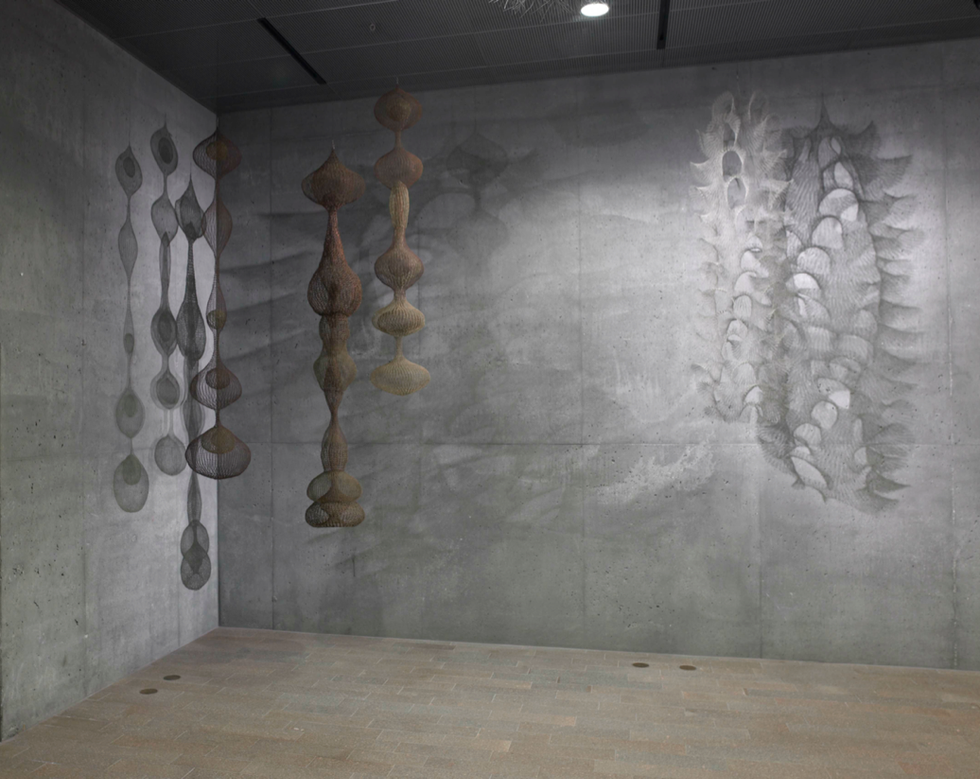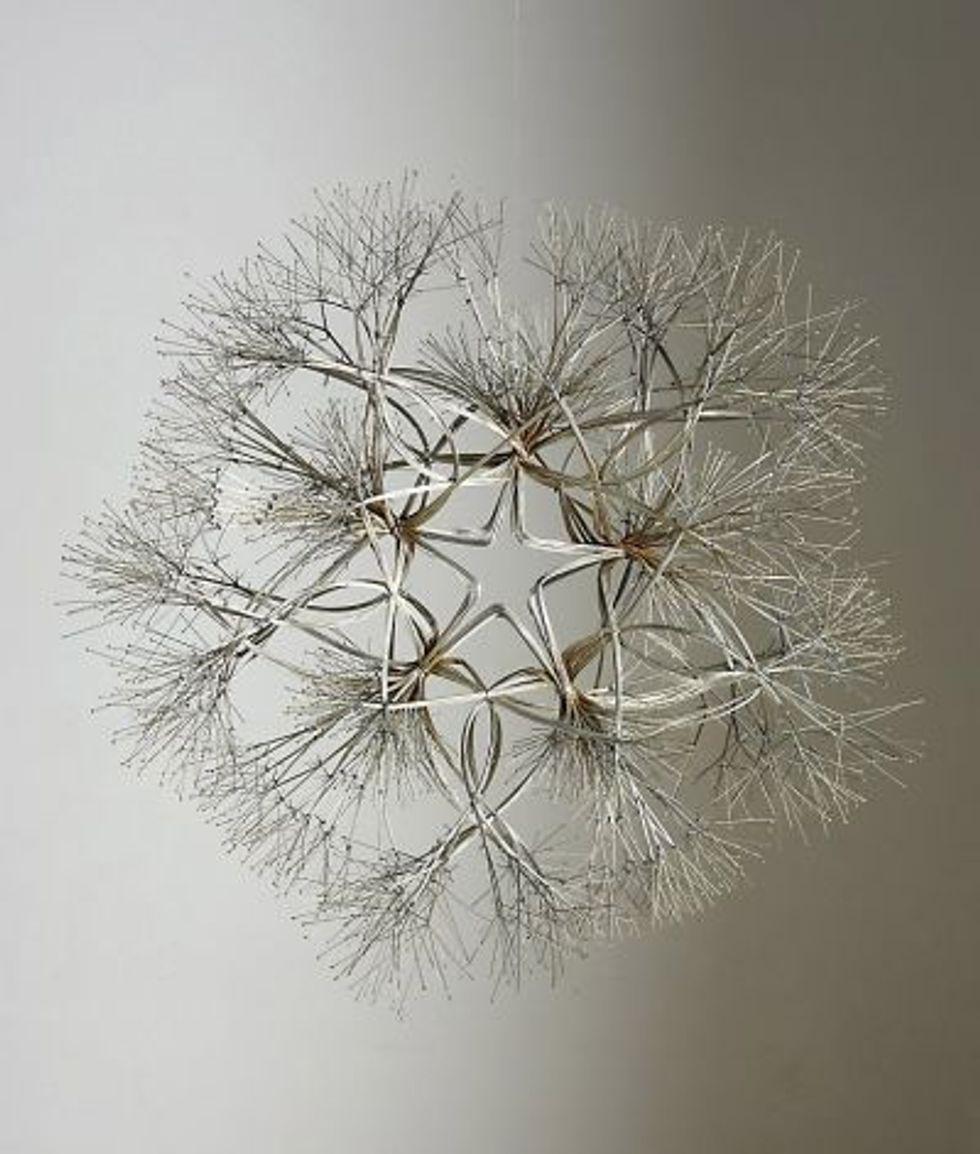This past August, San Francisco lost a priceless treasure. Artist Ruth Asawa—best known for her intricate wire sculptures, bronzes, and public works—passed away, leaving an indelible mark on the art world and local history. Asawa, a Japanese-American born in Norwalk, CA in 1929, didn't have an easy life but was never bitter about the hardships she endured growing up. As a teenager, she was sent to an internment camp with 120,000 other Japanese-Americans, and it was her positive spirit that allowed her to persevere during a time when she was stripped of personal freedoms. At the camp, she was taken under the wing of professional artists, and it is here that her own unique craft was born.
Asawa found inspiration in everything from Mexican basket weaving to the ideas of futurist Buckminster Fuller, and her work brought out the natural qualities in inorganic materials. Despite the intricacy and abstract beauty of her work, Asawa's use of unconventional materials and old-world techniques unfortunately relegated the artist to craft status in the eyes of the fine arts world until the de Young ran a long-overdue retrospective of her work in 2006. The museum was gifted 15 wire sculptures for installation in the lobby of the Nancy B. and Jake L. Hamon Tower, forever carrying on the artist's legacy.
Never content to rest on her laurels, Asawa was also a great education and arts activist. She tirelessly advocated for community art projects, and some of her most notable public works include the "Japanese American Internment Memorial" in San Jose and the "Andrea Mermaid Fountain" at Ghirardelli Square in San Francisco. Today, we pay tribute to the artist who redefined art as a way of thinking within the national dialogue.









































